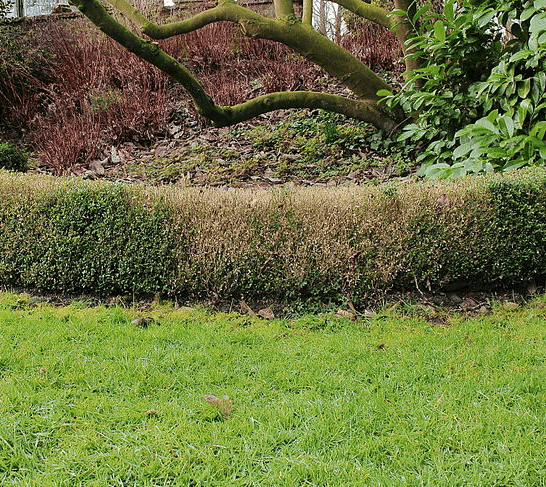BOXWOOD BLIGHT – AN INCONVENIENT TRUTH
Advance apologies for starting the New Year on a down note, however the topic of boxwood blight has been on my mind since fall. I am still somewhat in denial, hoping the problem will go away if I don’t talk or write about it. Sadly though, my magical thinking isn’t working. Like other uncomfortable reality checks, especially those connected to the roller-coaster of climate disturbance, boxwood blight is here for the foreseeable future.
WHAT IS BLIGHT?
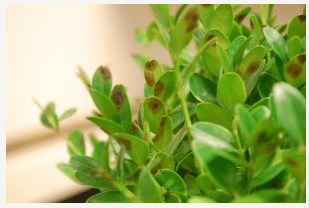
Boxwood blight is a fungal disease spread by spores carried via air and wind. High temperatures, humidity, overhead watering and rain create ideal vectors for the spread of blight. This year’s unprecedented rainfall and high humidity created the perfect combination for rapid spread of the disease.
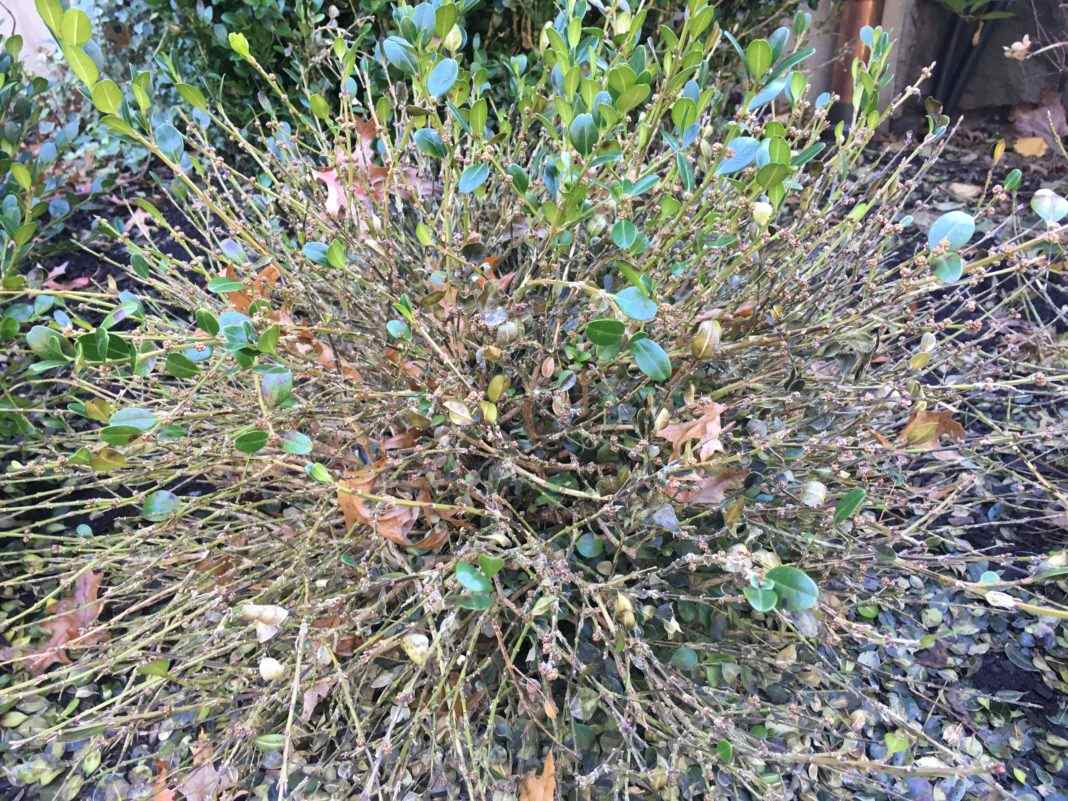
Once a plant is infected, the disease spreads very quickly, easily defoliating entire hedges within days. The damage can be sudden and dramatic, and once diagnosed, there is no treatment or cure. Affected plants have to be carefully removed along with all associated leaf debris. The debris cannot be composted and must be kept separate from other plant material. Tools used to remove affected plants must be disinfected in order not to further spread the disease. Even shoes, clothing, birds and other small animals can carry blight from one garden to the next! Making matters worse, soil hosts the fungal spores for up to 6 years, making replanting of new boxwood in the same location ill-advised. Even with removal of soil, introducing boxwoods again to the same plant bed is highly risky, although some cultivars are considered more resistant than others.
Blight was first identified in England in the mid 90’s but didn’t reach the US until 2011 when cases were reported in Connecticut and North Carolina. It moved on to Delaware, Virginia, Pennsylvania and a handful of other states, with the earliest cases confirmed in New Jersey in 2013.
Although aware of box blight traveling ever closer, I still hoped our gardens would be spared. This summer, however, over a dozen cases were confirmed in the Montclair/Glen Ridge area and reality set in.
WHAT TO LOOK FOR
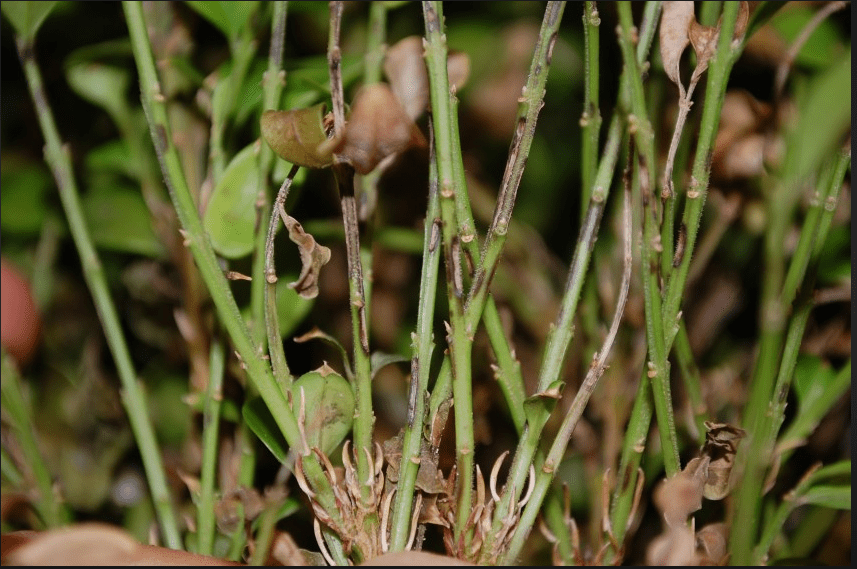
Boxwood blight appears first as light brown spots on the leaves. Spots enlarge, often with concentric circles, until entire leaves are affected and then drop completely off the plant. The fungus also infects the wood resulting in dark brown to black “diamond-shaped” lesions and stem dieback. The disease spreads very rapidly with plants fully defoliating in a short period of time. It’s important to have professional diagnosis and confirmation. Boxwoods are affected by other diseases which may cause similar looking damage.
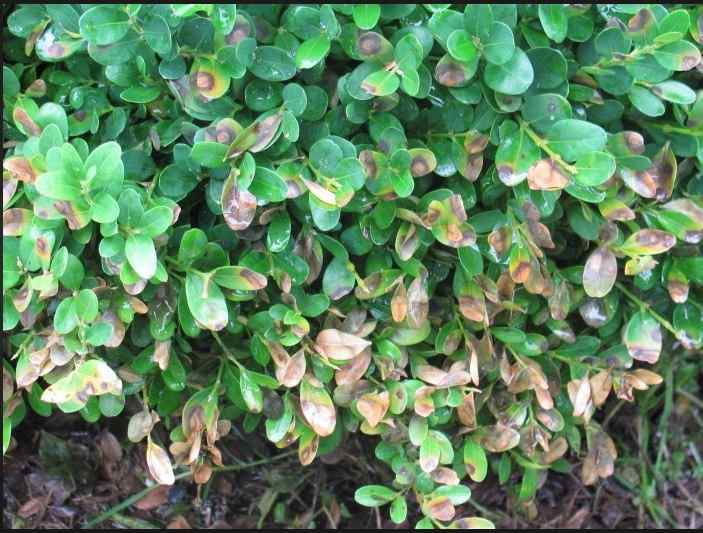
WHAT TO DO?
Beyond the damage and loss to properties of old and new boxwoods, two main questions arise: how to manage or prevent the spread of blight and what to substitute if boxwoods have to go away?
Prevention seems to be the best and only method for management right now with fungicide treatments sprayed throughout the growing season. Just as boosting the immune system staves off illness, the same is true for the plants. Spray treatments have to be applied to the full plant (all leaves and stems) and rainy weather will increase the frequency of treatments required. I recommend having your current landscape inspected by a trained specialist and following his or her recommended protocol for plant protection. Further, monitor overhead irrigation keeping it to a minimum especially during periods of high humidity or after heavy rainfalls. Consider planting boxwoods farther apart to promote air circulation and to slow disease spread.
PLANT SUBSTITUTES
It’s not an overstatement to say that boxwoods are the backbone of the landscape industry and that there is no real substitute. As a broad-leafed evergreen they create architectural structure, are winter hardy, deer resistant and even tolerate a good amount of shade. They are indisputably beautiful for hedging and take well to shaping and pruning. If boxwoods are now ‘high risk’ investments, what can be substituted?
Selections to consider are:
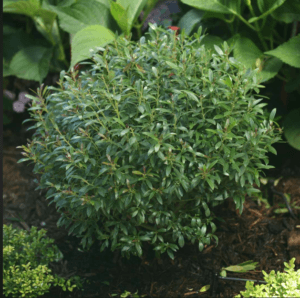
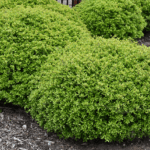
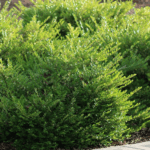
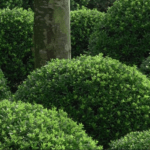
No other shrub possesses as full a range of benefits as the boxwood, so here’s hoping that the industry quickly will be able to both treat diseased plants and develop truly disease resistant cultivars. I still plan to use them, but more sparingly and with client consent that risk is involved. I can’t go cold turkey on one of my favorites, and remain eternally optimistic that the industry will eventually find us a way out of this dilemma.
The Suburban Lot is a monthly blog that highlights topics and issues unique to the suburban landscape. For assistance with any of the above information please contact Mierop Design, a complete resource for landscape design, installation, outdoor furnishings and property maintenance services.
